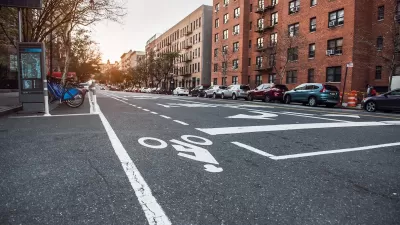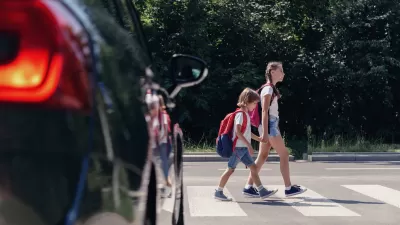For people with disabilities or limited mobility, a lack of safe infrastructure can cause significant disruptions, delays, and safety hazards.

Writing in Next City, Anna Zivarts, director of the Disability Mobility initiative at Disability Rights Washington, stresses the significance of improving road conditions for people with disabilities.
As Zivarts points out, “I hate the term ‘vulnerable road users’ because of its paternalism and the agency it takes away from those of us outside of vehicles, but the reality is we are less safe than the people in vehicles.”
Maybe there’s no stoplight, no stop sign, no crosswalk or curb ramps. Maybe there is a light but there’s no audible signal or the countdown isn’t long enough, especially if we have to dodge cars making right turns. Maybe we know cars go too fast and regularly blow through lights, and we’ve been hit or almost hit, or know someone who has.
For Zivarts, making conditions safer for people with disabilities means improving roads for everyone and “fighting for every street to be somewhere you want to walk or roll along.” Zivarts points to traffic calming projects that slow traffic in neighborhoods to make streets safer for non-drivers. In Seattle, for example, the city employs one-way streets in some neighborhoods to reduce vehicle speeds. Zivarts posits that this type of strategy should be employed at a larger scale. “What if slow speed streets were the default for our cities?”
FULL STORY: It’s Not Just Highways. The Time For Street Reform Is Now.

Trump Administration Could Effectively End Housing Voucher Program
Federal officials are eyeing major cuts to the Section 8 program that helps millions of low-income households pay rent.

Planetizen Federal Action Tracker
A weekly monitor of how Trump’s orders and actions are impacting planners and planning in America.

Canada vs. Kamala: Whose Liberal Housing Platform Comes Out on Top?
As Canada votes for a new Prime Minister, what can America learn from the leading liberal candidate of its neighbor to the north?

Paris Voters Approve More Car-Free Streets
Paris Mayor Anne Hidalgo says the city will develop a plan to close 500 streets to car traffic and add new bike and pedestrian infrastructure after a referendum on the proposal passed with 66 percent of the vote.

Making Mobility More Inclusive
A new study highlights the challenges people with disabilities continue to face in navigating urban spaces.

Texas Bills Could Push More People Into Homelessness
A proposal to speed up the eviction process and a bill that would accelerate enforcement of an existing camping ban could make the state’s homelessness crisis worse, advocates say.
Urban Design for Planners 1: Software Tools
This six-course series explores essential urban design concepts using open source software and equips planners with the tools they need to participate fully in the urban design process.
Planning for Universal Design
Learn the tools for implementing Universal Design in planning regulations.
Heyer Gruel & Associates PA
Ada County Highway District
Institute for Housing and Urban Development Studies (IHS)
City of Grandview
Harvard GSD Executive Education
Toledo-Lucas County Plan Commissions
Salt Lake City
NYU Wagner Graduate School of Public Service





























